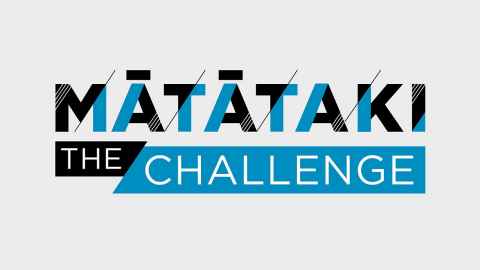The story behind New Zealand's mRNA platform
3 October 2023
The University is the co-lead of a project of national significance to build an mRNA platform to spark the next revolution in medical science and healthcare.

If a pandemic can be said to have a bright side, then the Covid-19 virus that swept the world, crippling economies and dividing societies, did deliver one shining example of the ingenuity of humanity. Covid-19 vaccines were developed at a speed never seen before, and they worked.
The best estimates of global deaths in the pandemic by the World Health Organisation suggest an excess mortality due to Covid of at least three million. It could have been far worse. Researchers at Imperial College, London, have estimated that the Covid-19 vaccines saved 19.8 million lives in one year alone, from December 2020 to 2021.
Professor John Fraser, Dean of the Faculty of Medical and Health Sciences, says, “It is difficult to contemplate what would have happened to the world if a treatment, one with 95 percent efficacy, had not been developed.” Consider the impact that continues to this day, he says.
Some 70.5 percent of humanity has received one dose of the Covid-19 vaccines, with 13.5 billion doses administered globally. The most common vaccines, those developed by Pfizer-BioNTech and Moderna, were mRNA vaccines, the first to be approved by the Federal Drug Administration. The speed at which those vaccines were developed has become legendary. The Pfizer-BioNTech vaccine, the predominant choice in New Zealand, was ready for clinical trial in 68 days. New drugs traditionally take decades to develop, trial and bring to market.
Partly this was because of the billions invested at a time of urgent global crisis, but it was also because the mRNA techniques enable far faster development while also opening up new approaches for medical treatments. Across the world, clinicians and researchers are excited about the potential new treatments for autoimmune conditions, cancer and genetic diseases. New Zealand researchers feel the same way because the country is building its own RNA therapeutics platform.
To the question of why New Zealand needs this, Fraser, who is the interim co-director of the fledgling mRNA Development Platform with Professor Kjesten Wiig of the Malaghan Institute, says, “We would be remiss if we did not take this step.”
Almost $70m has been invested to ensure New Zealand has the ability to design, develop and manufacture mRNA therapeutics at scale. The mission: build world-class and sustainable national capacity for the development, manufacture and commercialisation of RNA technologies for New Zealand. It is a research project of national significance and is co-hosted with Victoria University of Wellington and supported by the University of Otago and the Malaghan Institute of Medical Research. The development plan, based on seven key pillars that form the pipeline to turn research into drug development, clinical testing and manufacture at an industrial scale, has been signed off.
Airfinity, a UK-based disease forecasting consultancy, assessed the likelihood of future pandemics as deadly as Covid-19 at 27.5 percent in the 10 years to 2033.
For Fraser and the Government, the platform is insurance. In April, Airfinity, a UK-based disease forecasting consultancy, assessed the likelihood of future pandemics as deadly as Covid 19 at 27.5 percent in the 10 years to 2033.
The firm’s worst-case scenario describes an avian flu type mutation that transmits between humans and could kill as many as 15,000 people a day in the United Kingdom. The unpalatable scenario changes dramatically if effective vaccines can be rolled out within 100 days after the discovery of a new pathogen, reducing the risk to 8.1 percent.
Fraser says, “The Government is rightly keen to have the capacity to develop RNA technology to a point where, should we be faced with another crisis, New Zealand would have the ability to develop our own response.”
In the early days of the pandemic, he recalls the worry he felt about the place New Zealand would be in the queue for vaccines. At the time, he wondered whether Pfizer and others would be able to marshal the know-how and resources to manufacture the billions of doses the world required.
The desperation of early 2020 is easily forgotten, he says. Cargo planes were hastily chartered, officials intercepted containers of PPE passing through ports. Health officials all over the globe held tense late-night negotiations with the future of their nation’s people at stake. Fraser: “We might not be so fortunate in the future.”
Insurance is a good reason, but not the only one. Just as valuable, says Fraser, is that the RNA platform will drive new skills and support laboratory and manufacturing facilities so New Zealand can map out its own place in this revolutionary new frontier of medicine and therapeutics.

Fraser says, “The potential is that you can put a gene for anything inside our cells, and the cells become the bioreactors. It opens up a whole new field.”
Bioreactor is a reference to how vaccines are traditionally seeded in eggs to grow the quantities required for mass vaccination programmes. RNA technology sidesteps what have been complicated and costly steps to develop and manufacture vaccines and other medicines at scale. (See: Explainer: mRNA technology in three acts)
A further reason for New Zealand to have a homegrown RNA platform is that researchers can focus on what matters to us. “It’s too early to say right now, and we’re not pinning ourselves to any specific disease, but, of course, I have my favourite ones. What we will do is look at diseases that are most relevant to us, that the rest of the world is not doing.”
A likely candidate would be the influenza vaccine. Each year, there is a new iteration of the flu vaccine, based on the most common strain in the northern hemisphere. Sufficient quantities of the candidate vaccine are then grown in eggs. As the southern hemisphere winter descends, New Zealand begins its annual flu vaccine campaign.
What we do now is ‘crude and primitive’, says Fraser. The flu virus is sequenced, deactivated and then manufactured. But sometimes the researchers get the variant wrong. There’s antigenic drift as the flu strain mutates in hundreds of millions of people.
It can mean that once it arrives in New Zealand, the flu has become a different strain. In which case, the northern hemisphere flu vaccine concocted six months previously becomes almost useless. Even in a best-case scenario, the flu vaccine is only about 50 percent effective.
The scientific consensus is that it is only a matter of when not if, for the next pandemic. It could be another coronavirus or a particularly severe influenza. The 1918 influenza pandemic was a bigger killer than Covid and researchers like Fraser can easily offer far worse scenarios that are well within the bounds of possibility.
The mRNA platform opens up research areas beyond vaccines. A promising field is CAR T-cell therapies, developed to treat a number of blood cancers. Here T-cells, white blood cells that fight infection and disease are collected from a patient and engineered to recognise and attack the antigens, a specific protein found on cancer cells. A successful mRNA CAR T-cell therapy would not require the harvest of T-cells, speeding up the process and cutting the cost. Overseas researchers are looking to use mRNA technology to develop monoclonal antibodies, a targeted drug therapy to help the body develop the immune system to fight cancer and autoimmune diseases.
“Within seven years, the mRNA platform will be operating, and I would expect to see a number of homegrown therapeutics and clinical trials underway.”
A further tool offered by RNA is that it can be used to ‘silence’ genes, allowing researchers to target genes associated with disease.
At Auckland City Hospital, Professor Ed Gane of FMHS led a successful human clinical trial with a therapy known as the CRISPR/Cas9 mRNA nanoparticle. The therapy is designed to silence the gene leading to the fatal disease amyloidosis, where liver cells produce an abnormal protein that leads to damage in the heart, nervous system and the gut. Once those who inherit the gene become adults, the symptoms appear with the condition usually fatal within 10 years. Early results suggest that the gene therapy is a success.
The mRNA platform is in its earliest days. There is infrastructure to plan and research networks and collaborations to be established, nationally and internationally. In the near future foundations will be laid for a production facility to manufacture new therapies at scale. Fraser is not one to speculate. But he is confident that New Zealand will gain great benefits by joining the global mRNA technology push. “Within seven years, the mRNA platform will be operating, and I would expect to see a number of homegrown therapeutics and clinical trials underway.”

Explainer: mRNA technology in three acts
Act One:
If DNA is the recipe for life, then mRNA (messenger RNA) is the sous chef assembling the courses, from appetiser to dessert. The human genome contains 22,000 genes and the DNA for our genetic code sits within each of our cells. The messenger RNA delivers specific parts of the genome into our cells. Once a cell receives the instructions from a particular piece of RNA, it starts to produce the recipe, a specific protein. Proteins do the heavy lifting. They transport oxygen, speed up reactions, fight infection and much more.
As gene sequencing became commonplace, the techniques to mimic mRNA were perfected in laboratories. The processes of life turned out to be more complicated. Fraser says, “In the early days of mRNA technology, it was discovered that if you inject naked RNA into cells, you get a nasty reaction.”
While researchers saw the potential of using mRNA to programme cells to produce beneficial proteins, they quickly found what it did instead was stimulate a strong, innate immune response. Nasty stuff could happen. The mRNA research journey hit a substantial roadblock.
Act Two:
In August 2005, two scientists, Katalin Karikò and Drew Weissman, then working at the School of Medicine at the University of Pennsylvania, published Suppression of RNA Recognition by Toll-like Receptors: The impact of Nucleoside Modification and the Evolutionary Origin of RNA, in the journal Immunity.
The pair saw the enormous potential in developing mRNA therapies. In the paper, the pair outlined their discovery. By altering one of the mRNA’s four building blocks, known as nucleosides, they found that the altered mRNA did not trigger the body’s immune system. Without the inflammation, it meant mRNA could be given to people and animals safely. Professor Fraser says, “Their discovery completely negated the innate response. Their technique essentially de-toxified mRNA.”
Their breakthrough has earned Karikò and Weissman the 2023 Nobel Prize in physiology and medicine. Yet in 2005 their work was received with silence. In an interview with the Boston University alumni magazine, they said the paper had been turned down by several medical journals. But once published they thought the world would take notice. Weissman says, “I told Kati our phones are going to ring off the hook. But nothing happened. We didn’t get a single call.”
They kept the faith and launched a company called RNARx to develop mRNA therapeutics, but funding ran out and they had to shut the company down. But others had noticed. Five years after publication, two biotech companies, Moderna in the United States and BioNTech in Germany, licensed the patents.
In 2019, a mysterious virus was reported to be spreading in China. By 2020 the world was facing a pandemic, borders closed, airlines mothballed their planes and societies enacted quarantines to slow the spread of infection. Moderna, Pfizer-BioNTech got to work. More than 20 types of vaccine were developed, but the mRNA vaccines, targeting the now-famous Covid spike protein, were the best.
In December 2020, Katalin Karikò and Drew Weissman received their first shots of the revolutionary mRNA vaccine to protect against Covid-19. Weissman recalled, “It was an emotional moment. There were a lot of down times, a lot of soul searching, a lot of figuring out why things weren’t working. But we never lost hope because we both saw the incredible potential that mRNA had.”
Act Three:
There was one final hurdle. Karikò and Weissman had figured out how to ‘de-toxify’ mRNA. Even so mRNA remains inherently unstable. On its own the mRNA breaks apart in the circulatory system. To work, the mRNA vaccines need to find their way safely to the nucleus, the control centre for our cells. The answer is to encase the mRNA in lipid nanoparticles.
Professor Fraser says, “That’s the other clever piece to this. It’s the other trick in that the lipid nanoparticles protect the mRNA until it can reach the interior of our cells.” The techniques to develop lipid nanoparticles have been known since the 1990s and have been truly tested in the global vaccination campaign against Covid 19.
Without the knowledge to mimic mRNA in the laboratory there would be no vaccine. Without Karikò and Weissman, RNA would have remained a technological dead end. Without the knowledge to build lipid nanoparticles, there would be no delivery system.
Go to Mātātaki, The Challenge, for longform stories and video on research and its impact.
For republication and media queries: Gilbert Wong, Research Communications Manager
E: gilbert.wong@auckland.ac.nz
M: 021 917942
